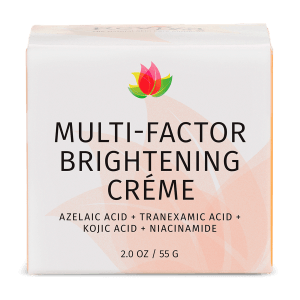Skincare innovation never sleeps. Every year, researchers uncover ingredients that promise to revolutionize the way we care for our skin. Some are high-tech lab creations; others come from ancient remedies reimagined for modern use. But not every buzzworthy ingredient works for every skin type, and knowing how to use these innovations is key to unlocking their potential.
Enter advanced skincare ingredients, designed to target specific concerns with precision. From improving hydration to targeting stubborn pigmentation or fine lines, these new heroes in skincare offer solutions tailored to every skin type and need.
Let’s explore ten trailblazing skincare ingredients that deserve a spot in your routine.
Polyglutamic Acid: The Hydration Powerhouse
Move over, hyaluronic acid. Polyglutamic acid (PGA) is emerging as a superstar for hydration. Derived from fermented soybeans, it holds up to 5,000 times its weight in water, making it one of the most effective moisture-retaining ingredients available.
- Who should use it? Ideal for dry or dehydrated skin, but oily skin types can also benefit, as hydration helps regulate oil production.
- Where to find it: Look for serums or lightweight moisturizers. It pairs beautifully with hyaluronic acid for a double dose of hydration.
Bakuchiol: The Gentle Retinol Alternative
If your skin doesn’t play nice with retinol, bakuchiol might be your answer. Sourced from the Babchi plant, this natural ingredient offers similar anti-aging and acne-fighting benefits without the irritation.
- Who should use it? Sensitive skin types or those new to retinol alternatives. It’s pregnancy-safe, too.
- Where to find it: Creams, serums and oils that focus on smoothing fine lines and brightening.
Peptides Enhanced with Copper: Firming and Repairing
Peptides are already beloved for their ability to rebuild collagen, but copper-enhanced peptides take things further by improving elasticity and speeding up skin repair.
- Who should use it? Those noticing sagging skin, wrinkles, or dullness. Particularly beneficial for aging skin.
- Where to find it: Targeted serums and firming neck creams.
Tranexamic Acid: Your Ally Against Dark Spots
Tranexamic acid, initially used in medicine to treat excessive bleeding, has found a second career in skincare. It inhibits melanin production, making it a standout for fading dark spots and hyperpigmentation.
- Who should use it? Anyone battling melasma, post-inflammatory hyperpigmentation, or uneven skin tone.
- Where to find it: Spot treatments, moisturizers or lightweight essences for layering.
Tremella Mushroom: Nature’s Secret to Dewy Skin
This ancient mushroom has been rediscovered for its impressive ability to retain moisture and boost skin elasticity. It also has antioxidant properties, which help protect against free radicals.
- Who should use it? All skin types, especially those looking for natural hydration without greasiness.
- Where to find it: Hydrating serums, lightweight lotions, and sheet masks.
Encapsulated Retinol: Potency Without the Sting
Traditional retinol can irritate, but encapsulated versions offer a gentler alternative. Encapsulation ensures a slow release of the active ingredient, reducing the risk of sensitivity.
- Who should use it? Retinol beginners or anyone prone to dryness or flaking.
- Where to find it: Night creams and eye serums designed for long-term use.
Azelaic Acid: A Multitasker for All Skin Types
Azelaic acid is a naturally occurring compound known for its ability to calm redness, fight acne, and even out skin tone. It’s particularly effective for those with rosacea.
- Who should use it? Acne-prone, sensitive, or redness-prone skin.
- Where to find it: Leave-on treatments, gentle exfoliating serums or even moisturizers
Ectoin: The Stress Shield
Discovered in microorganisms that thrive in extreme conditions, ectoin helps protect skin from environmental stressors like pollution and UV rays. It also strengthens the skin barrier.
- Who should use it? Urban dwellers and anyone exposed to harsh climates.
- Where to find it: Day creams and sunscreens with protective claims.
Epidermal Growth Factors (EGFs): The Fountain of Youth?
EGFs are proteins that stimulate cell regeneration, promoting faster healing and improved elasticity. They’re a favorite in anti-aging circles for their ability to reduce fine lines and scars.
- Who should use it? Aging skin or anyone recovering from procedures like microneedling.
- Where to find it: High-end serums and post-procedure products.
Niacinamide-Powered Ceramides: Barrier Repair, Upgraded
Niacinamide is already a favorite for calming inflammation and boosting radiance. When paired with ceramides, it helps restore a compromised skin barrier while improving hydration.
- Who should use it? Anyone dealing with dryness, sensitivity, or redness.
- Where to find it: Rich moisturizers and soothing treatments for winter months.
Choosing the Right Ingredients for Your Skin
Every ingredient shines when paired with the right skin type and formulation. The key is understanding your skin’s needs—hydration, barrier repair, brightening, or anti-aging—and picking products tailored to those goals.
One Last Word on Skincare Innovation
The beauty of skincare lies in its adaptability. Science and nature come together to create ingredients that address even the most stubborn concerns. Keep an eye on the labels, and let these pioneering ingredients work their magic!












